Getting there… I have shortlisted a few candidate dSLRs based on the last criteria. By buying resale dSLRs, I can have a wider range to choose from. It is usually a trend to buy resale dSLRs since there are always beginners and those who wish to upgrade. Majority of dSLR users owned or at least owned a resale dSLR, so nothing to worrying about resale cameras. The candidates are EOS350D, Nikon D40 and Nikon D50. I have decided axe EOS400D and shortlisted the earlier EOS350D because of the price. I have also axed the newest entry-level Nikon dSLR D80 because of the price. D70S was not considered because it uses CF cards. I have not axed EOS350D, though it uses CF cards, because I have always loved the DiGiC II processors and trusted Canon’s quality. Comparing the shortlisted cameras, I have summarized them below, less the confusing specifications. Nikon D40
I have always been taking photography casually but never seriously.
But recently, after getting a bit of influence from a friend, I am starting to take photography much more seriously.
(TO READ THE FULL ARTICLE REVIEW, CLICK ON POST LINKER BANNER BELOW TO READ)
I had a prosumer (professional consumer) PNS (point-and-shoot), Olympus C730UZ. I used it for a year and a half during my undergraduate days (2002) and sold it after I returned (2003). C730UZ is a 3.2MP (megapixel) PNS with manual functions such as M-mode (full manual), AP (aperture priority) and SP (shutter priority) modes. C730 is also among its class, the pioneer PNS to feature a 10x optical zoom, thus earning its then reputable UZ (Ultra-Zoom) suffix. However, working with the 10x was horrible without tripod. Even with one, images are usually plagued with high noise and poor sharpness. Back then, the sensor technology was still very laid back and definitely not ready for such features, not to mention ‘anti-shake’ control. I was also not too keen in exploring the M, AP and SP modes.
After selling the C730UZ at slightly more than half the price of the cost, I topped it with little more and got myself a compact PNS. I was considering Pentax Optio S and Canon IXUS 40 or Powershot SD300 Digital ELPH, because I wanted something easily ‘pocketable’. I chose the latter because of the DiGiC II chip which boasts faster performance. IXUS 40 was indeed a faithful performer till this very day. It gave me better pictures in almost most occasions. However, I felt that lack of M, AP and SP modes left me craving for more controls over my pictures. Recent duties as unofficial photographer made me realize that I have pushed to the limits of my IXUS 40. It has poor flash recharge, the ISO performance is just not sufficient to compensate photography without flash. I am always missing the ‘magical moment’ attributed to various factors such as shutter lag and AF (autofocus) speed. I need to upgrade!
Panasonic FZ-50 and Fujifilm S6500fd
I have lost touch with camera updates since my last research was during my IXUS 40. The sub-$1K prosumers were the first to be in my research list. The reason for short-listing these models is that they are considered ‘bridge’ prosumer PNS cameras. They are the closest PNS, in terms of performance, compared to a dSLR (Digital Single-Lens Reflex) cameras. These models features the advanced controls such as M, AP and SP modes, as well as a fluid-damped mechanical ultra zoom lens (10.7x for S6500fd; 12x for FZ50).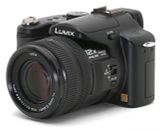
Panasonic FZ-50
(click on image to enlarge)
In simple terms, these prosumer PNS allows a live preview on the LCD display BEFORE capturing the image They also have an EVF (electronic viewfinder) so that one can simulate using a dSLR, hence sometimes these prosumer PNS cameras are also termed EVF cameras. These EVF display the exact frame as the LCD, thus any adjustments made to the settings will reflect immediately during framing of the shot, unlike the dSLR where you can only see the outcome after taking the shot, since what you see through the viewfinder is what you see or reflected through the lens (thus termed single-lens reflex)..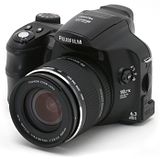
Fujifilm S6500FD
(click on image to enlarge)
These two prosumers also feature a fluid-damped mechanical zoom lens that is fixed to the camera body, meaning that they are not swappable like dSLR. These zoom lens are also ultra-zoom lens covering a broad focal length from wide to tele (28-300mm for S6500fd; 35-420mm for FZ50). These mechanical zoom lens are operated manually via rotating the lens itself, unlike conventional rocker/trigger-type zoom button.
Panasonic Lumix FZ-50 is equipped with a 10.1MP CCD, however, it was proven that the extra mega-pixels compared to the earlier models, makes no significant differences. Armed with a famous high quality LEICA DC VARIO-ELMARIT 12x optical zoom (35-420mm equiv.), FZ50 wins all ultra-zoom lens PNS two hands down. The already popular MEGA O.I.S (Optical Image Stabilizer) has worked its way into all Panasonic cameras to reduce potential ‘camera’ shake. With a newer VENUS Engine III processor, FZ-50 promises better pictures and processing speed. It also has a 2.0-inch flip-out 207,000 pixels LCD to allow users to engage challenging angles in a PNS aspect. There is also the option to add an external flash via the TTL-flash hot-shoe. The EVF is also very useful because of the high resolution EVF. The manual focusing mode is interesting where a box displaying a digitally-zoomed image appears in the frame to assist the user in critical focusing. Despite all the advantages of the FZ-50, this camera suffers from ISO issues. The images taken with ISO 400 are acceptable, but anything above that, the images appear very soft and smudgy due to excessive Noise Reduction. Hence, the FZ-50 only proves itself useful when there is sufficient or good lighting. FZ-50 uses the cheap and capacious Secure Digital (SD) card.
Fujifilm S6500fd is equipped with Fujifilm’s lastest famous Super CCD HF VI at 6.3MP. The suffix, fd, came about because of the hardware-based face detection technology, where the camera auto focus and meter (dpeneds on settings) on any face detected in the frame. The face needs to be straight on from the front and side profiles prove to be useless here. The hardware calculates the facial features via a set of complex algorithms, thuis allowing face detection. Nothing to cry about the Real Photo Processor II. The lens is a fixed ultra-zoom twist barrel covering 28-300mm (equivalent to 35mm film), thus 10.7x optical zoom. Fujifilm cameras uses the proprietary xD-Picture cards. Fujifilm has once again proved its fantastic Super CCD superior from the excellent ISO performance. Even at a high ISO of 1600, the noise level is still acceptable. Fujifilm has once again proved that they are a leader in noise control. NO other PNS comes close! The flaws of the s6500fd are that it doesn’t have a flash hot-shoe, a less interesting menu, low resolution and dim EVF, uses a less popular and expensive xD-card, poorly designed battery compartment and have a plastic tripod mount.
I had decided on the Fujifilm S6500fd over the Panasonic Lumix FZ-50, simply because of the excellent noise-control for high-ISO during low lighting and the zoom is wider, 28mm, meaning you get more into your frame. Ultimately, the S6500fd (~S$650) is way cheaper than the FZ-50 (~$900) (price as of November 2006) and is considered a breakthrough budget ‘bridge’ PNS camera with tons of dSLR like functionality packed into one can. Depending on what shots you wish to take. S6500fd performs much better in most situations but lacks the megapixel count, however, FZ-50 is an excellent performer with its excellent Leica optics in well-lit conditions preferred. Nevertheless, both cameras have screw threads on the lens for filters and converters. My friend who got me back to photography is presently using an S6500fd and has proven that there is much more about this camera that surprises a compact PNS or entry-level dSLR user.
From prosumer to dSLR (Digital Single-Lens Reflex)
Recently, major camera manufacturers have been targeting people to jump into the bandwagon of dSLR, by releasing budget entry-level dSLRs. When I say budget, I meant sub-S$1K. A budget entry-level dSLR is often packed with most features of higher-end dSLRs but with slightly lower specifications. These dSLRs are either sold as a body (camera without any lens) or as a kit (camera with a kit lens).
One distinct difference between the a dSLR and a ‘bridge’ prosumer PNS camera, is that dSLR have the capability of switching lens while a prosumer have fixed lens. The pro of lens switching is that the user gets more versatility with the wide range of special lenses, while the con is that lens switching is the major contributor of dust into the sensor and clearing stubborn dust particles require servicing. However, this has been minimized via the use of post-processing software dust removal or by hardware (currently EOS400D has such a function).
Another distinct difference is the live preview. This has been the major deterrent for people to jump into dSLR, since they prefer to see before they shoot, while dSLR only allows users to see output after the shot. After all, isn't live preview what digital camera is about? Unlike conventional film SLR, hardly one produces beautiful shots via 'one-shot, one-kill'. Without post-preview, SLR users must know what they can get from their settings and only know when the film is developed, while dSLR get the benefit of re-shoot after post-shot preview. As well with digital imaging, any average picture can be 'photoshopped' (PSed, meaning post-processing the image with graphics software such as Adobe Photoshop) into an award-winner. Digital photography is thus no longer a pro-shooter thing with emergence of digital imaging.
Another note-worthy difference is that of the PNS's viewfinder (VF) or sometimes electronic viewfinder (EVF) to that of a dSLR's VF. Most compact PNS cameras are equipped a 'real' VF that an optimized VF that allows users to frame the shot by seeing the real scene. One can identify such a VF when the front of the camera has an 'eye-hole' that is in/directly joined to the VF on the rear. Hardly people use this VF since they can use the LCD to live preview and frame. Framing with LCD is also much accurate as what you see is what you are shooting TTL (through the lens), since the VF is located separately and not TTL and also result in minor framing error. Just imagine someone taller seeing the same object from the same spot behind you. Such a VF also do not potray the outcome of adjustments made in-camera before shooting. An example is when shooting in sepia, you see the sepia colour tone on the LCD but not the VF. Hence, EVF or a small LCD is replacing the VF in most cameras. Some compact cameras are even abolishing an EVF or VF. But an EVF or VF definitely prove useful when the LCD screen starts to look dim under the bright sunlight. An SLR or dSLR VF is different from the earlier discussed VF because the (d)SLR's VF is TTL, meaning the image seen on the VF is exactly the same as the one captured, with no framing errors. This is attributed to the pentaprism or pentamirror in the (d)SLR body. The subject is captured through the lens and reflected by up to the VF. Only when the shutter is released, the mirror flips up and subject is captured by the sensor instead. That is also the reason why a live preview on a (d)SLR is not possible (*proved wrong with the new Olympus E330). That makes (d)SLR harder to use but fun, because one needs to know its settings and can only see the outcome after the shot. Many times, I have experienced absolutely over/under-exposed pictures!
The dSLR VF also displays the essential information of the present setting of the camera.
Shortlisting dSLR candidates
With the recent launch of Canon EOS400D entry-level dSLR, Nikon followed up with the release of their own budget entry-level D40. EOS400D retails at S$1669, while the D40 retails at S$1088 (prices as of December 2006). Both prices are for camera body + kit lens (28-55mm in both cases). With these budget entry-level dSLRs, I felt that instead of paying S$650 for the S6500fd prosumer. I can upgrade (or downgrade?) to an entry-level dSLR. Furthermore, I have been wanting to move to dSLR level of photography. Before I do so, I listed out a few preferred criteria that I must follow strictly.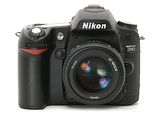
Nikon D80
(click on image to enlarge)
Canon EOS350D 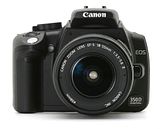
Canon EOS350D
(click on image to enlarge)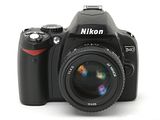
Nikon D40
(click on image to enlarge)
Nikon D50 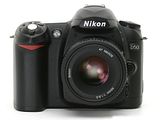
Nikon D50
(click on image to enlarge)
After doing the research, I realized that I should be settling for a resale entry-level dSLR instead of a prosumer PNS, since I just have to fork out about S$200-300 more. However, getting an entry-level dSLR will also mean that I am paying more for a basic (3x) zoom lens instead of a 10.7x optical zoom. Comparatively, for someone who prefers better zoom, options of hot-shoe flashes, manual focusing, mechanical zooming, M/AP/SP-modes, tele/wide-convertors, options for filters, all at a budget and most importantly to point-and-shoot with live preview, a prosumer can deliver all these while an entry-level cannot do so. In order to achieve all that, a dSLR user will have to spend on accessories and lenses that cost more than the camera body. It is wrong to perceive that an entry-level dSLR can deliver excellent quality pictures compared to prosumers. dSLR users will always be plagued with issues of dust and expensive lenses but the customizability compensates everything. I would prefer to say that dSLR is a completely different aspect of digital photography, and is definitely not a must for nice pictures. So before you jump into the bandwagon of dSLR, just think whether you are going to lug the extra lens, expensive gear, fight the ever-existant dust and live without live preview. I am ready!
I have axed EOS350D because despite it giving better performance and more value-for-money. The main reason is not that it uses CF cards, but the fact that Canon EF lenses are way more expensive than the Nikon Nikkor D/G DX lenses, not to mention the ‘L-range’ (luxury range). The basic Canon EF lenses can easily cost around S$1K, while Nikkor D/G DX lenses ranges from S$300+ to S$1K+. In the long run, it is definitely more worthwhile to bank my cash into Nikon.
Showdown of D40 vs D50
I will then have to decide either a brand new Nikon D40 or older resale Nikon D50. Price-wise, a resale D50 kit will cost around S$800 and brand new at S$950, while a new D40 is going to set me back by around S$960. ‘Courts’ was having a rarely brilliant promotion at S$1088 with 2x1GB.SD cards, tripod, camera bag and a 40GB portable HDD camera partner. While I located a 9-month old D50 kit with bundle (inlcudes spare batt), all for slightly more. I will need to reconsider the differences between D40 and D50. D40 and D50 are very close in performance. D40 being a newer model have better processing engine and hence, images look cleaner, crisper and better than the D50. I was also captivated by the look of the new menu and its fantastic LCD monitor. However, by having a better LCD monitor, D40 dropped the status LCD and moved the setting status to the LCD monitor. I would still prefer to use the status LCD as it consumes less power and I do not have to keep activating the LCD monitor. The sleep time of the bright LCD monitor of the D40 is a tat too long, such that it becomes a hindrance when one views through the viewfinder. D40 also have a shorter shutter lag and viewfinder blackout. D40 also have an additional HI-1 ISO 3200 for extreme low-light conditions, but proves to be useless with too much noise. However, D40 does have more control over its auto ISO settings. The D50 have bracketing function which I am not too concerned with. Additional features like the in-camera retouching in D40 also doesn’t fascinate me too much, however, I am not too sure about having the FUNC button. Both cameras do not have DOF button, so no complains about that. D40 have a slightly better advantage by having support for SDHC cards (cards up to 4GB and potentially higher capacity cards) while D50 can only support up to the conventional 2GB cards. Although D40 can give more shots than the D50, in terms of battery life, I prefer the EN-EL3 because it is used by D70S and D80. D40 uses a new slim EN-EL9 battery and is currently only useable by D40. Nikon has yet announced other uses and sale of EN-EL9. I think it is easier to get EN-EL3 from resellers since it is used by more popular models. Size does matter, but in this case, I prefer D50 since dSLR can never be ‘pocketable’ and a larger body frame gives user a better and more comfortable grip.
The most critical difference determining one’s decision is the AF. D40 have 3 AF areas while D50 have 5, nothing to cry about except that the VF looks fancier with 5 AF areas. The reason for D40 having a smaller body frame and cheaper retail is because Nikon has dropped the AF motor in the D40 body. D40 is the first of the Nikon dSLR to be without an AF motor on body. So how does it affect AF? It doesn’t, but there is always a ‘BUT’. D40 can ONLY auto-focus with Nikkor AF-S and AF-I DX lenses, lenses with built-in AF motor. It can still use the older F-mount type G/D lenses, but D40 users will have to use manual focus only. However, D50 have an on-body AF motor. This AF motor will auto-focus all F-mount type G/D lenses (from the DX lenses to older lenses). Many reviews consider this loss of the AF motor as a crippled-down D40 or its nail-in-the-coffin. This is all part of a strategy to make new users to buy only Nikkor AF-S or AF-I lenses, after they get tempted by the cheap body. However, some users have claimed that the D40 can AF Sigma USM lenses, since they have an in-built AF motor as well. Nikon has also yet to release DX format ‘prime’ lenses with built-in AF motor. These prime lenses have the best construction, allowing users to fully utilize their dSLR and definitely take better pictures, all is of course with a heavy price tag (in terms of S$1K and above). Nevertheless, one who simply wishes to stay simple and stick to one or maybe two basic lenses, losing the AF motor does not really matter. Then the D40 is clearly a better choice. I am swayed towards D50 as I ultimately wish to have more versatility in terms of lenses selection, and to be able to pick from the bigger range of resale F-mount lenses, rather than just AF-S or AF-I.
Ultimately, the deciding factor is still price. I would prefer to spend as little as possible (doesn’t everyone want that?). I am not to bugged about it being a pre-owned since the resale D50 still have 3 months of warranty. I am using D50 as a stepping stone to learn photography using dSLR. I might upgrade to a better body in the future and would like to retain any type of lenses that I might invest in. Hence, I need not necessary spend so much on a mint set, if I know that I might resell this body one day. I will spend as little as possible irregardless if it is mint or resale. Every single dollar saved is still saved!
Nikon D50 Acquired
I have made my decision to bank my cash into the resale Nikon D50 kit. I have read up on how to use it and took my virgin shots at a nearby park. Here are some sample pictures. I have not optimized the pictures except resizing and 100% cropping to show its original quality. Overall, I am pleased with the shots, though I find the lack of vibrance in the colours. I believe that the reason being poor lighting (cloudy day) and that I lack practice and knowledge of the settings. No fret! There are still retouching functions via Photoshop, though I hope to avoid. I also hope to improve in leaps and bounds from this very day on. So keep your eyes glued to my blog!
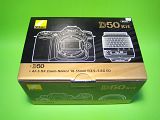
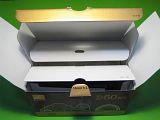
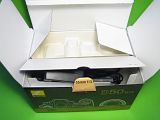
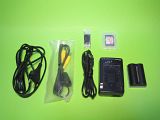
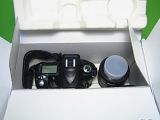
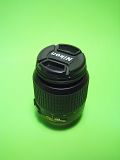
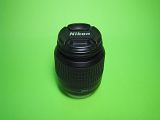
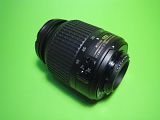
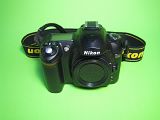
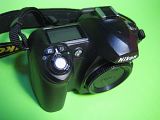
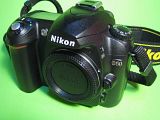
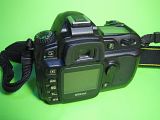
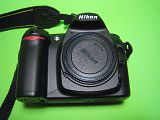
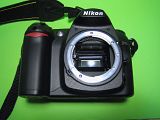
(click on images to enlarge)
Testing the D50
I have put the D50 to test and here are the results. I have done resizing down to 1024x768 without further enhancements and 100% crops to scrutinize any possible flaws at full resolution without photoshop.



(click on images to enlarge. Left=100% cropped, Right=Resized to 1024x768)
technorati tags
Photography Camera digital+SLR dSLR Canon Nikon Panasonic Fujifilm
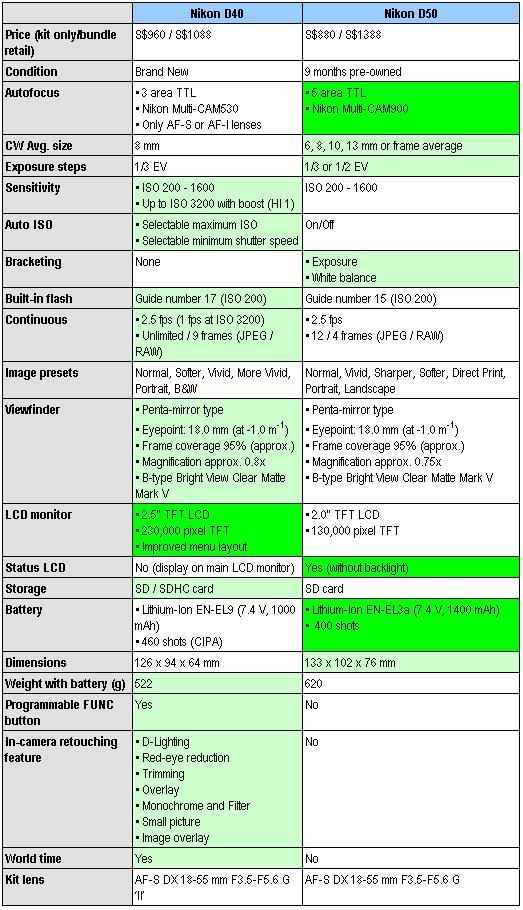
Comments
Also, don't throw away your point-and-shoot too quickly. It's important to have a camera with you all the time.
The photographer plays a more crucial role than the device.
You have a great site!